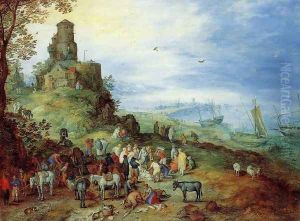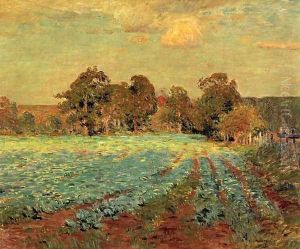Samuel Edwin Whiteman Paintings
Samuel Edwin Whiteman was an American artist known for his impressionist landscapes, seascapes, and depictions of rural life. Born in Philadelphia, Pennsylvania, in 1860, Whiteman grew up in a time when the United States was undergoing significant cultural and industrial changes. His artistic inclinations were evident from an early age, and he pursued his passion for art through formal education.
Whiteman studied at the Pennsylvania Academy of the Fine Arts, one of the leading art schools in the United States, where he was influenced by Thomas Eakins and other prominent American artists of the time. After completing his studies, Whiteman traveled to Europe, as was common for aspiring artists of his generation, to further his education and exposure to the art world. He spent time in France and was particularly impressed by the French Impressionists, whose style greatly influenced his own work.
Upon returning to the United States, Whiteman established himself as a skilled painter. His landscapes and seascapes often featured the countryside and coastal areas of New England and the mid-Atlantic states. He was adept at capturing the changing light and atmosphere of these settings, a hallmark of the impressionist style. Whiteman's paintings were noted for their vibrant colors, loose brushwork, and ability to evoke the essence of the places he depicted.
Throughout his career, Whiteman exhibited his work at various institutions, including the Pennsylvania Academy of the Fine Arts and the National Academy of Design. He was a member of the American Watercolor Society and the Philadelphia Sketch Club, reflecting his active engagement with the art community. Whiteman's art was well-received, and he gained a respectable following among art collectors and critics of his time.
Samuel Edwin Whiteman's contribution to American Impressionism remains significant, as he helped to popularize the movement in the United States. He continued to paint and exhibit his work well into his later years. Whiteman passed away in 1951, leaving behind a legacy of artworks that continue to be appreciated for their beauty and impressionistic qualities.

